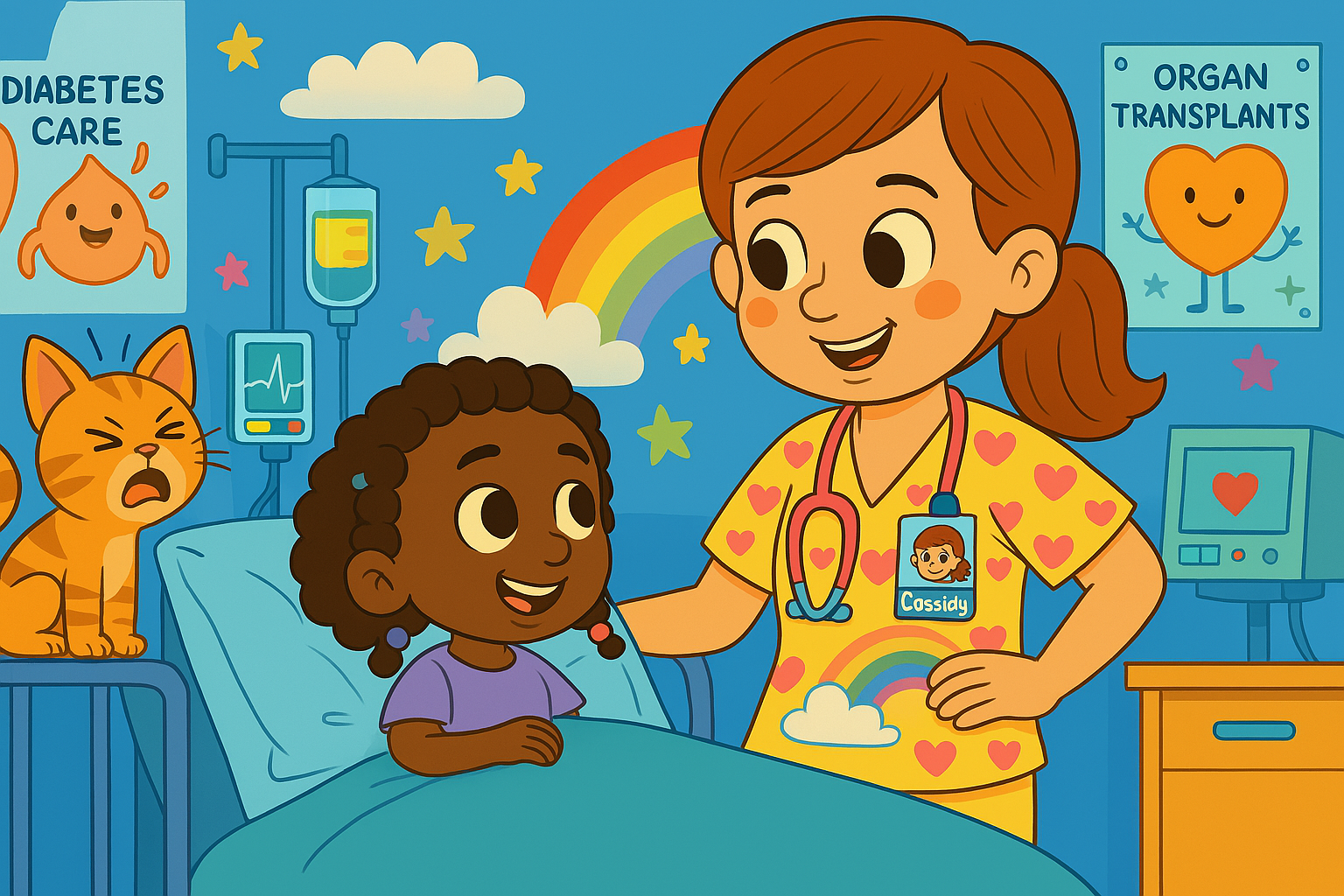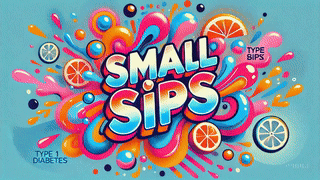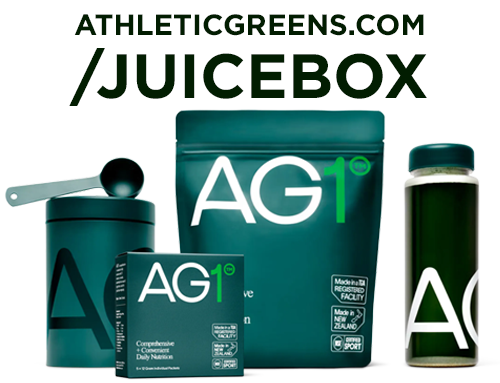#821 The Math Behind Setting Insulin to Carb Ratio
Scott and Jenny break down the math behind setting your insulin to carb ratio. I really wanted to call this the GOZINTAs of ICR.
You can always listen to the Juicebox Podcast here but the cool kids use: Apple Podcasts/iOS - Spotify - Amazon Music - Google Play/Android - iHeart Radio - Radio Public, Amazon Alexa or wherever they get audio.
+ Click for EPISODE TRANSCRIPT
DISCLAIMER: This text is the output of AI based transcribing from an audio recording. Although the transcription is largely accurate, in some cases it is incomplete or inaccurate due to inaudible passages or transcription errors and should not be treated as an authoritative record. Nothing that you read here constitutes advice medical or otherwise. Always consult with a healthcare professional before making changes to a healthcare plan.
- 00:00:19 Insulin to carb ratio calculation.
- 00:11:22 Starting point for insulin-to-carb ratio.
- 00:15:11 Consider insulin sensitivity when calculating insulin dosages.
- 00:18:22 Defining diabetes and managing it.
Scott Benner 0:00
Hello friends, and welcome to episode 821 of the Juicebox Podcast
welcome back today Jenny and I are gonna be going over the mathematical equation that will help you come up with your insulin to carb ratio. Don't worry, it's not really like super confusing or anything. While you're listening, please remember that nothing you hear on the Juicebox Podcast should be considered advice, medical or otherwise, always consult a physician before making any changes to your health care plan. We're becoming bold with insulin. If you like Jenny and you want to hire her, you can she works at integrated diabetes.com. Are you a US resident who has type one or is the caregiver of someone with type one? Oh, if you are, this is great news, because you can go to T one D exchange.org. Forward slash juice box and fill out the survey. Every completed survey benefits the podcast and type one diabetes research. T one D exchange.org Ford slash juice box. At the end of this episode, I'll tell you about more Juicebox Podcast episodes and series that will help you with insulin to carb ratio. So hang out till the very end
this episode of The Juicebox Podcast is brought to you today by the Contour Next One blood glucose meter. Learn more at contour next one.com forward slash juicebox. This is my favorite meter. It's incredibly accurate, easy to carry. I'll tell you more about in a little bit. But contour next.com forward slash juice box get yourself a great meter. The podcast is also sponsored today, by ag one from athletic greens. Are you looking for a green drink that tastes good? You're looking for ag one. I'm using it every day. You could go to athletic greens.com forward slash juicebox to get a book by the way, why would you use my link? Because when you do you get a free year supply of vitamin D and five free travel packs on top of your order. Athletic greens.com forward slash juice box. Alright Jenny, we're gonna have this little three episode series about setting doing the math, the math, I want to say maths like funny, but I can't get that out right the math of of diabetes. So we've, we've recorded about setting up your Basal insulin, this episode is going to be setting up your insulin to carb ratio. So the total grams of carbs versus the total insulin you need. Basic is basic idea. If your insulin to carb ratio is one to 10, then you use one unit of insulin to cover 10 carbohydrates. Right? Okay, so how does someone who's insulin to carb ratio is one to 10? How do they know that? Who told them? And what if they want to change it?
Jennifer Smith, CDE 3:14
I think the first question is, usually it starts with some type of educator or physician endocrinologist that says you know we're going to use we're going to use the strategy of allowing you to choose the food that you eat and count up carbohydrates. That's, you know, we're very our job centered in diabetes education. And so we're going to use a ratio of every time you eat 15 grams, you need to take one unit of insulin, I think 15 is the most commonly used, there's insulin to carb ratio.
Scott Benner 3:53
Oh, no kidding. Okay,
Jennifer Smith, CDE 3:54
at least on an initial like, we're going to set you up your one to 15. I mean, when I was first set up, I know that I didn't need one to 50. But that's what I was set up with is a wonder 15. Which leads to why we are talking about this because you need to have an idea of how to adjust that. Right. Which brings in a rule. It's called the 500 rule. Do you know the 500 rule? Scott?
Scott Benner 4:22
I don't think I mean, do I know it off the top of my head? No?
Jennifer Smith, CDE 4:28
No. Okay. Well, the 500 rule essentially. I don't know I'm not gonna say I know who decided on the 500 rule. But essentially, it's assuming the on average consumption of the average person of their carbs, and what their liver is sort of like outputting naturally. And so we use this rule of 500 and you take your total daily insulin dose So total daily is both basil and Bolus together. So let's say you use 30 units of insulin a day total. Okay? You're going to divide 30 into 500. And that's going to give you an average insulin to carb ratio of about 16.
Scott Benner 5:25
Okay, okay. Yes, I did it wrong, but okay.
Jennifer Smith, CDE 5:32
500 divided by 30. I don't know. Okay, so it's actually 16.6. But you know, we don't do like half. So it wasn't
Scott Benner 5:43
15,000 Because I was like, I know I'm doing this
Jennifer Smith, CDE 5:47
for it's not 15,000 No, I promise I stopped paying attention
Scott Benner 5:50
to the school around seventh grade is what I just figured out.
Jennifer Smith, CDE 5:55
Okay, are math paying attention to?
Scott Benner 5:58
So it takes the 500 I have a 3030 units, my total daily insulin? Yeah. And I take the 500 I do this math, I come up with 16.6. So this is my starting insulin to carb ratio, why would be a
Jennifer Smith, CDE 6:11
general starting place, especially if you are trying to figure out where to make some adjustments? Let's say that you are, let's say, and I will say that the 500 rule is, as I said earlier, it's more to the conservative, right? I mean, I know that my insulin to carb ratios, I on average, somewhere between about 25 to 28 units a day, total insulin, that's my total my insulin to carb ratios are more aggressive.
Scott Benner 6:54
Listen, if you're using insulin, or you have diabetes, you need a blood glucose meter. And you would like that meter to be accurate and easy to use. Am I right? Of course I am. I mean, this is not any greater stretch of the imagination. Well, guess what? I know the meter for you. It's called the Contour Next One blood glucose meter. My daughter has been using it for many years now. It is incredibly accurate. And it has Second Chance test strips. These are pretty much the big parts of why I'm telling you about it today. Accuracy is key of course and not wasting test trips is nice because they're expensive right? Now why else may you want this little dream of a meter? Well, it's easy to carry easy to use, easy to read has a bright light for nighttime viewing. And I mean it's it's pretty Jimmy's nice. You know what I mean? Contour next.com forward slash juicebox. Head over there for more information about a blood glucose meter than you'll ever need. Actually, there are also links there in case you want to buy the meter now online, you can there's like six different places you can buy the meter from right now online at my link, you will see all of them contour next one.com forward slash juice box. Easy to use, easy to carry. Second Chance test strips may be cheaper in cash than the meter you have now is through your insurance. You should check it out. Contour next one.com forward slash juice box. Are you looking for a green drink that doesn't taste like a green drink? If you are, you're looking for a G one from athletic greens. I started taking ag one because I was never quite sure of the quality of my diet and wanted to make sure that I was getting the essential vitamins that I may be missing. And now I take it every day and you could too. I find that AG one eases my digestion and leaves me feeling energetic. Ag one is great for any lifestyle keto paleo vegan dairy free, you name it gluten free, and it only has one actually less than one gram of sugar per serving. There's no GMOs, no nasty chemicals or artificial anything. You should check it out. Athletic greens.com forward slash juice box actually athletic greens is trying to make this a good experience for you. They're gonna give you a free one year supply of immune supporting vitamin D and five free travel packs with your first purchase. All you have to do is visit my link athletic greens.com forward slash juice box. Did you know that Athletic Greens was created when the founder experienced a ton of gut health issues and ended up on a complicated and expensive supplement routine. That's right. And now here we have it. Ag 110 A powder you just scoop in the water shake up drink. You're done. I think I must spend my first 30 to 60 seconds every morning with ag one but that's it. It's not a big commitment of time but it is paying me back athletic greens.com forward slash juice box. There are links to AG one and the Contour Next One blog glucose meter, as well as all the sponsors in the show notes of the podcast player you're listening in now, and at juicebox podcast.com, where you can just type in the links, athletic greens.com, forward slash juice box, contour next one.com forward slash juice box, when you use my links, you're supporting the production of the show. And I very much appreciate it. Let me get back now to Jenny, and the math.
Jennifer Smith, CDE 10:24
My insulin to carb ratios are more aggressive than what that 500 Rule factors out to be okay. But it is a very good starting place until you are able to evaluate your trends and assess where you need to shift that a little bit. So again, if it's from a starting place, if you have absolutely no idea what you're doing, and you're just all you know, is that, gosh, I use about 50 units today. Fantastic. Then, let's and you're really wanting to get into better coverage of your mealtimes and everything. And right now you're just sort of willy nilly taking some doses. Right, I'll give you a very fair starting place.
Scott Benner 11:11
Okay, is this statement that I have found at the NIH, the 500 rule 500 divided by total daily insulin is often used to find a starting point for the insulin to carb ratio. That is how many grams of carbs one unit of insulin cover. So that's a that's a perfect statement for what we're talking about. Okay. Absolutely. Perfect statement. Yes. Okay. So. Okay, so we've been diagnosed, and somebody's you've heard the episode about setting your Basal insulin, you've got your Basal insulin set pretty well. And you're seeing nothing like what you want, you have stability, let's say your Basal insulins good so you have stability away from food and away from carbs. So like when you're sleeping overnight, or you know, when it's been three hours since a meal and you're just sitting around your blood sugar is sitting stable where you want it to be, and now, but you're seeing like wonkiness at your mealtimes first thing to think about is m. I mean, I know this doesn't belong here based on the title, but I still think you have to say, am I Pre-Bolus? thing? My meals? Correct? Yeah, right. Absolutely. Yeah. So this, yeah, this is math, four. This is how much insulin I need for this many carbs. If we're setting up a fair fight between the insulin and the carbs, not if I eat and then shoot the insulin and later or eat at the same time that I'm shooting or something like that.
Jennifer Smith, CDE 12:31
Correct? Do you have to have the the second piece for analysis to evaluate from a starting place? I'm going to try this ratio. But you have to give the insulin a fair fight.
Scott Benner 12:42
Right, right. So again, protip series, you're probably should listen to that about how to actually use insulin. I think there's a Pre-Bolus episode. But I would listen, in the end, this is all great. I would just tell you to listen to the prototype series if you want to understand how insulin works. But to get this actual rule, this piece of math, this is it right here. One more time, Jenny, let's just make up a different number. I look at my I look at my pump. I've had diabetes forever. And I look at my pump and I say I use I'm just gonna make crazy numbers. I use 48 units of insulin every day on an average between I don't know 50 and 46. I'm calling it 48. Okay, I take 500 and divide it by 48. Yes. Am I insulin to carb ratio is one per about 10.4. Correct? Yes, you have no idea how proud I am of myself.
Jennifer Smith, CDE 13:37
Your math teacher would be very, very proud. No,
Scott Benner 13:39
every math teacher I ever had, I think thought I had bumped my head right before I walked into the door. So I was like, Hi, I'm here to not learn math today. Very bad at it. But okay, that's it. All right. Super simple, right?
Jennifer Smith, CDE 13:54
For the final rule, the 500 rule that's for insulin for your food.
Scott Benner 14:00
Yes. Right. But how about the moment when Arden moves into college, and I'm calling you from a target while we're shopping for things? And you say don't use 500? What did you tell me to do? You gave me a different number, I think,
Jennifer Smith, CDE 14:13
right? You can, you can make that a little bit more conservative, or you can make it a little bit more aggressive by just notching it up or down. Right. And that, I mean, it brings in to the next next part of bolusing, our corrective insulin right, where you can make the factor to figure out a little bit more aggressive, a little bit more conservative. So you know, you could certainly say, the 400 rule instead of the 500 rule, but in general, that 500 rule is really going to give you a starting place, a good starting place. And I think it's easier to remember than cash. It could go up a little bit, go down a little bit where you're going to do that Anyway, in your tweaking, right. Now, in terms of a good place to start, you may also consider that sensitivity for every person in a general statement is often that heavier weight, less activity, you are going to require more insulin than somebody who is a lower weight and more active or potentially, maybe they're the same weight as you, but their weight is based on more muscle based mass. And they are much more active than you. That person even though they're the same weight, as you may have heightened sensitivity to insulin, right, their insulin needs may be very much reduced compared to where you are.
Scott Benner 15:51
Even though we don't talk about it very much. Although there are episodes about digestion, that person might also be more likely to be eating cleaner food that's going through their system not impacting their blood sugar is longer during the digestion process, a lot of things to think of So, okay, so are we good here on this? We'll move on to making an episode about insulin sensitivity. Yes, yeah. And will we be talking about something that has 1500 in it when we get there? No, no. Do something. Oh, that's okay. I'll see you in the next episode. Okay, bye. All right. A huge thanks to AG one from athletic greens, head over there right now, athletic greens.com forward slash juice box, get your first order five free travel bags and a year's worth of vitamin D, athletic greens.com forward slash juice box. I also want to thank the Contour Next One blood glucose meter and remind you to go to contour next one.com forward slash juice box, find out about the little meter that could like you know the little engine that could just a great meter, I just I count on it. And it comes through contour next one.com forward slash juice box. And of course Jenny who works at integrated diabetes.com You can find her there. Alright, I'm gonna thank you right now for listening, and then give you some more episodes to listen to about insulin to carb ratio. So this is interesting because I think the defining diabetes episode about carb absorption digestion would be helpful here episode 668. I think that the episode called the perfect Bolus in the Pro Tip series would help me to find out what that one is for you. Sorry, you might think I would have done this before. But episode 226. Again, the entire Pro Tip series would be incredibly valuable. If you're new to diabetes, check out the bold beginning series. Some of these terms are lost on you. You're looking for the defining diabetes series, all the terms are listed out there. There's part of me that also thinks you should find the pro tip about fat and protein. And a lot of the other episodes we have to about how to Bolus for fat and protein. And if you're thinking to yourself, why would I Bolus for fat and protein? Scott, they don't have carbs in them. Oh, well, then you're really going to love them. Episode 263 diabetes, pro tip fat and protein. Episode 471 bolusing insulin for fat. What else do we have here? If you need that explained to you episode 360 is a defining diabetes episode. That's called defining diabetes, fat and protein rise. There's a lot here that would help you. In general, your carb ratio is the beginning, right? But it doesn't. It doesn't cover everything because of the glycemic load and glycemic index of foods, which reminds me that you're looking for episode 391 diabetes pro tip glycemic index and load. Again, if you don't know why you're looking for that there's a defining diabetes episode about it. Listen. If you're new beginning series, it's available in your in your app. It's available at juicebox podcast.com. You can find a list of the episodes that are in the series at juicebox podcast.com, or in the private Facebook group in the feature tab. Really, if you're new, please start with that one. Then move on if you'd like to the defining diabetes episodes, all these terms and many more are defined in short episodes. And then there's the diabetes pro tip episodes which really digs into how to take care of yourself. So get the beginning series, get your feet wet. Learn about the different terms and what they mean. And then go listen to that Pro Tip series. Get the a one C that you want, and deserve. Thank you so much for listening. I'll be back very soon with another episode of The Juicebox Podcast.
Please support the sponsors
The Juicebox Podcast is a free show, but if you'd like to support the podcast directly, you can make a gift here. Recent donations were used to pay for podcast hosting fees. Thank you to all who have sent 5, 10 and 20 dollars!


































